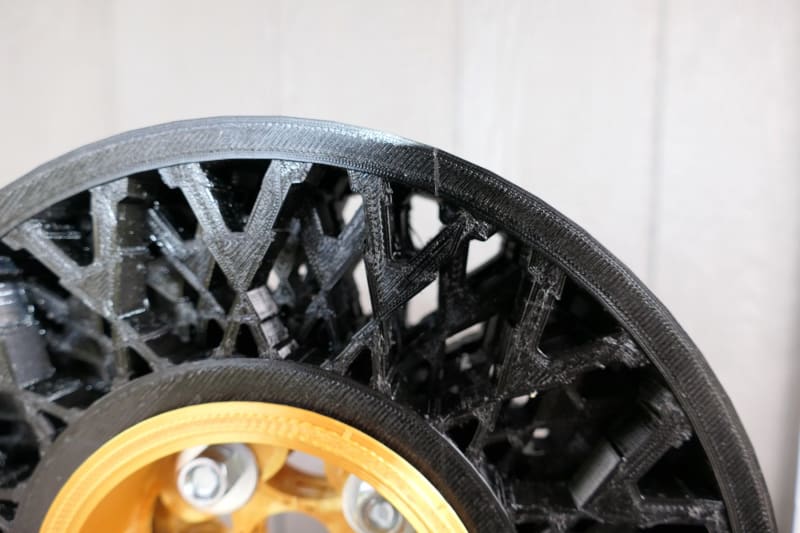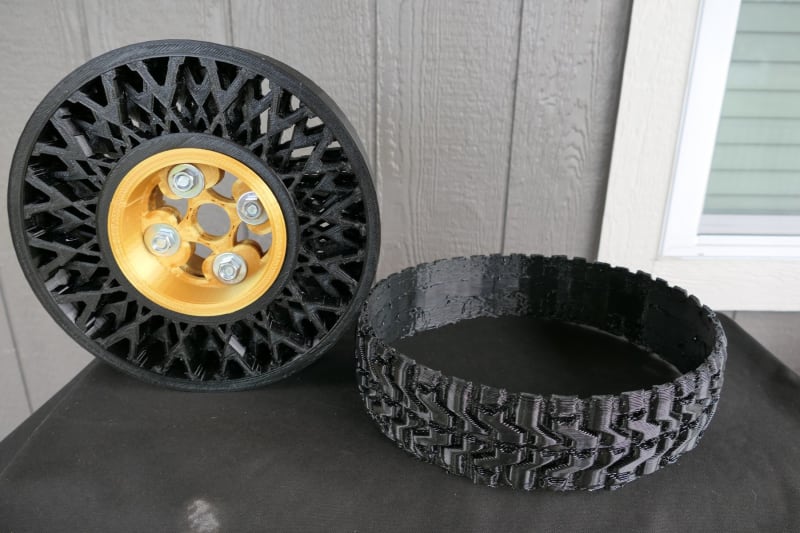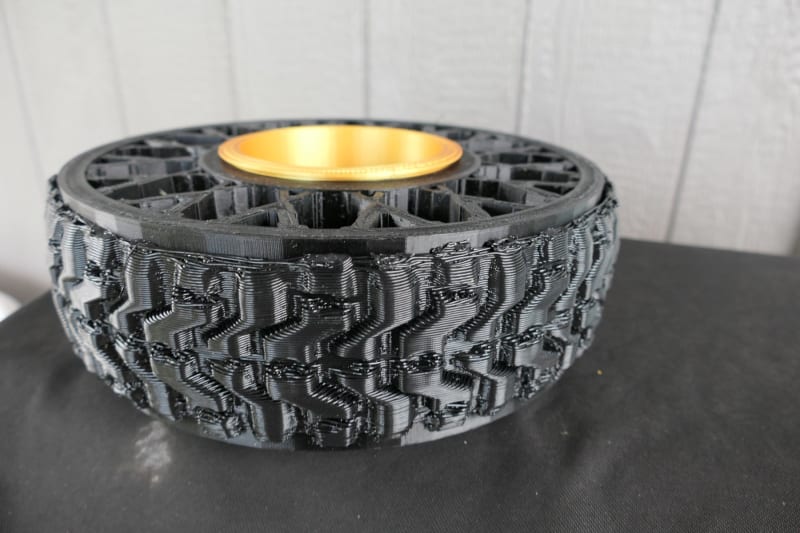This new invention is to improve shock absorption, cushioning, spring and comfort for non-pnuematic tires and run-flat tires. The traditional approach has been “legs” or “fins” that are constructed perpendicular to the rotation of the tire. While these are reasonably effective, they may compress or deteriorate over time and use. Further, the spoke configuration may not rapidly return to it’s original shape when contacting and re-contacting objects. By using an A-shaped configurable element, an added measure of shock absorbing characteristic is added to improve and enhance overall performance and durability. The A shaped/segmented components can easily contour to various shapes and sizes. The component itself can be variable in height, width, thickness and spacing.
This makes it ideal for implementing into non-pnuematic and run-flat tire designs.
This new inventive technology uses components that attach and follow the circumference of a tire. Any configuration such as the honeycomb, fin, etc can only be perpendicular to the tire rotation. An “A” shaped, segmented configuration can follow the shape of the circumference while maintaining resilience and structural stability.
The automotive industry is also on a quest to increase fuel economy. Alternative fuel is one direction, but inefficiency in moving a vehicle is certainly another. Factors contributing to inefficiencies in current automotive technology include weight and friction. Some studies indicate that 85% of the energy created by an engine is used to move the vehicle and not its passengers. Friction from the engine itself and rolling resistance (friction created by a low air tire contacting the road) contribute most to these inefficiencies.
Another deficiency of a traditional pneumatic tire relates to its dependence on air. A tire which has lost sufficient pressure to cause it to become distorted will impair fuel efficiency and the stability of the vehicle. If a tire becomes worn, develops a leak, or is punctured, air is exhausted and the tire becomes flat to the point where the metal of the wheel rim comes into contact with the ground. Flat tires are common place and operators of a vehicle equipped with traditional pneumatic tires will more than likely experience several flat tires within their lifetime. The tire needs to be changed and/or repaired. A flat tire will likely damage the wheel, or vehicle, and places the vehicle operator and other vehicles in danger. A flat tire should be considered an emergency situation.
Using a non-pnuematic tire or some form of components within the tire to make it a run-flat tire, prevents the damages and danger associated with low or flat tires. Unlike current run-flat tire technology which allows the tire to reduce in diameter just above the rim, this new tire technology actually increases the useable diameter of the tire improving operator control.
Therefore, this new and unique design for an automobile tire achieves reduced friction and improved fuel economy, while considering the need for acceleration and stopping, with the added feature of increased safety by preventing hazards if a tire becomes flat.
Like this entry?
-
About the Entrant
- Name:Geoff Mccue
- Type of entry:individual
- Patent status:none









